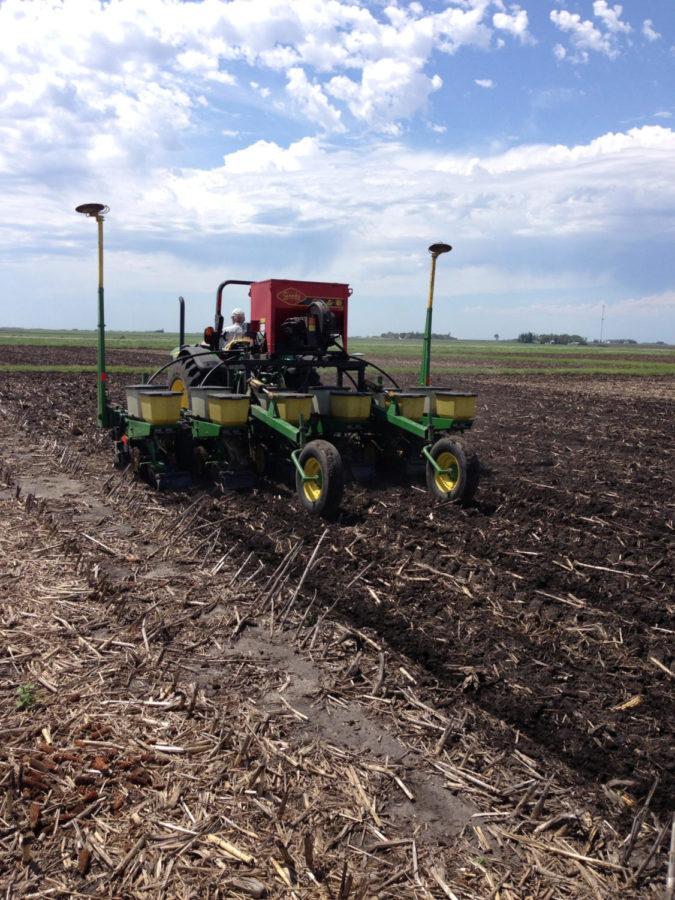New bill makes changes to farm subsidiaries, cuts food stamps program
“Life at a research farm is never boring,” Smidt said of working at the Northern Research and Demonstration Farm. “Every day there is something different. I always look forward to coming to work and seeing what sort of tasks there will be.”
February 14, 2014
The farm bill signed into law last Friday by President Barack Obama has made some changes to the farm subsidies program and includes cuts in the food stamps program.
The farm bill covers a lot of ground with policies and funding for agricultural commodities, research, food safety regulations, international food aid and natural conservation programs among others.
One of the key changes includes substitution of direct payments with crop insurance. Previously, farmers were paid an amount totaling $5 billion regardless of whether they had produced anything, according to an ABC news report. According to the new bill, subsidized crop insurance would take risks against devastating weather, floods, droughts, etc.
Another part of the bill cuts $8 billion in food stamps over 10 years, about 1 percent of the total food stamp budget. Other provisions include funding for agricultural research and incentives for local farm markets.
The country of origin labeling rule, which requires that meat products sold in the U.S. have information on where the animal was raised, slaughtered and processed, will stay in place. The conservation program has set new standards for soil and water standards.
“I think farmers overall have wanted to get rid of direct payments for a long time,” said Kelvin Leibold, ISU extension farm management specialist. “In the end, they don’t go to farmers, they go to landowners.”
He said this arrangement did not benefit tenant farmers as much. The new insurance program would help take out the risk factor for the tenant farmers.
The five-year bill, known as the Agricultural Act of 2014, was heavily debated by both the parties in Congress for more than two years. Republicans had proposed $40 billion in cuts to the food stamps program over 10 years while Democrats opposed these cuts.
After the last farm bill expired in 2012 and a new bill was still in the works, there was concern regarding the prices of various agricultural commodities that depended on federal subsidies.
Leibold said two programs that complement the insurance program will allow farmers to be reimbursed for crop losses on a historic benchmark or when the price drops below a “reference point.”
This point is lower than the market price for both corn and soybeans. The direct payment system guaranteed payment while the new program gives no such guarantee.
“I was expecting about what they gave us … I was hoping there would be some more money into ethanol production and Nutrient Reduction Strategy … we can’t handle all of them just on our state funding,” said Sen. Rich Taylor, D-Mount Pleasant, vice-chair of the Senate agricultural committee.
“I am happy that they are starting to move forward for change,” Taylor said. State legislators passed a resolution last month urging Congress to pass a new farm bill.
“The programs are different, but the objective is the same, give money to farmers,” said Bruce Babcock professor of economics and part of the faculty at the Center for Agricultural and Rural Development. He added that the changes in the farm bill might be beneficial for farmers, but not for consumers.
Babcock said the farm bill doesn’t actually help taxpayers. He added that the subsidies for new products such as rice and catfish would not make much difference to the in the prices consumers pay.
“[The farm bill] is not actually about doing anything good for the public. It’s about transferring money to groups of growers,” Babcock said. He supported other provisions in the bill for research, conservation and food regulations.
Leibold said implementation and evaluation of the farm bill is still going to take some time. There are various steps in this process, including specific rules and regulations, hearings and training for farmers to choose the right program.







